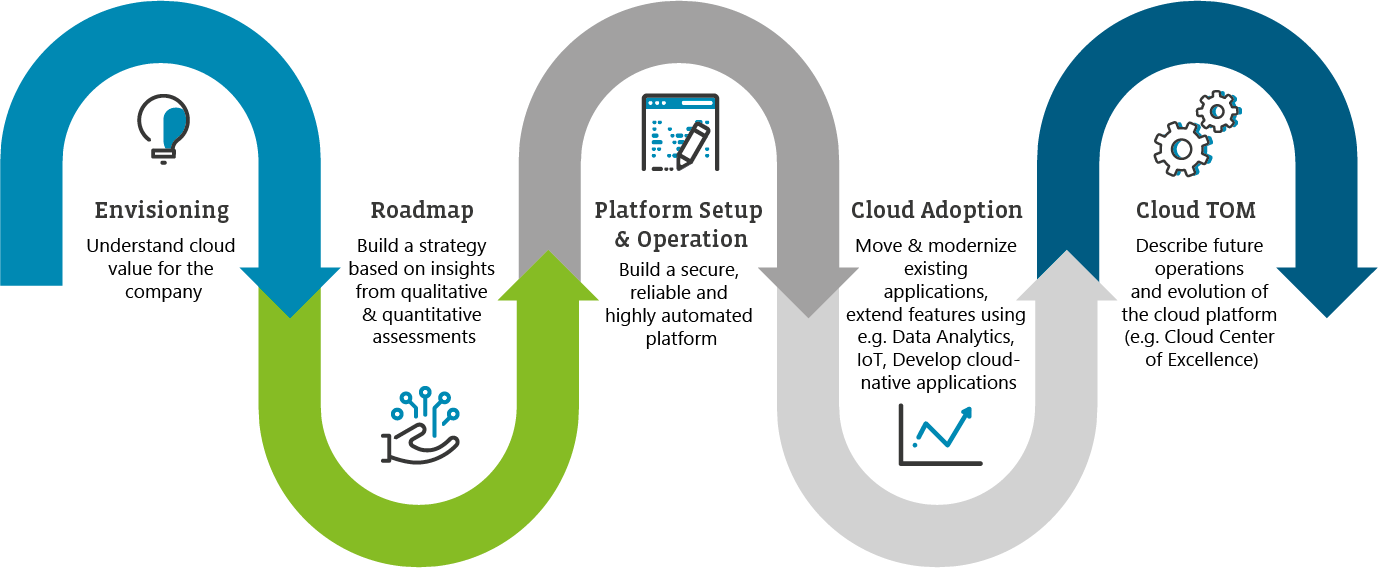When negotiating their way through the jungle of enticing offers by innovative cloud services, companies tend to get lost in the underbrush of possibilities. The low barriers to entry tempt IT and specialist departments to launch new proof of concept initiatives – which, in the worst case, lack overarching game rules and transparency for individual projects.
Activism not only entails financial risks: We too often observe that unsuccessful cloud adoption projects launched by customers not only fail to add value, but also ultimately increase resistance within the organization. Employees question how reasonable the suddenly such urgent launch of rolling out so many different cloud services is. This leads to growing resentment.
At the same time, new technologies have already started to become a liability, with companies facing a whole series of well-known challenges to get their employees up to speed.
Avoiding the situation described here requires a roadmap. Such a roadmap clearly lays out the cloud initiatives as well as a procedural model for how to achieve them.
The roadmap also defines the motivation for taking the path to the public cloud, as well as the cases when it is recommended or even necessary – and the cases when it is not.



